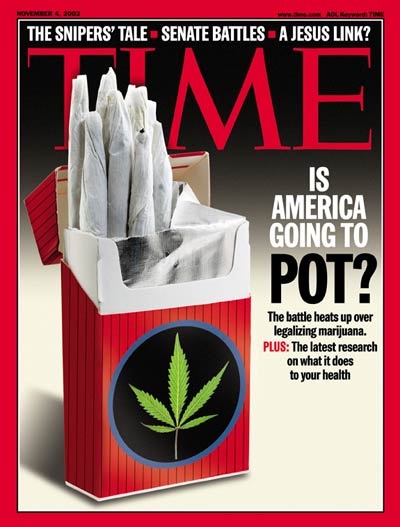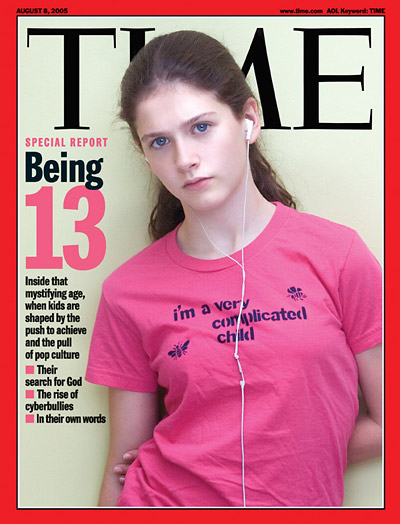Choosing Covers
As managing editor, Stengel was ultimately responsible for Time ’s content. While Time had a staff of 226, including reporters, photographers, artists, and editors, it was Stengel who held ultimate responsibility for the magazine’s material. [8] With his team of top editors, Stengel directed the magazine’s coverage and, perhaps most importantly, chose its cover every week. Part of the job was to choose compelling artwork and text to display. But far more critical was the decision about which article from all those in development would become that week’s cover story.
Economics. Kelly, Stengel’s predecessor as managing editor, describes Time ’s cover as its “main selling mechanism.” A compelling cover could generate impressive newsstand sales over and above Time ’s subscription sales. In 2006, Stengel’s first year as managing editor, Time sold an average of about 130,000 magazines a week at newsstands. Its best-selling issue that year, on April 6, urged from the cover, “Be Worried. Be Very Worried” about global warming. It sold more than 200,000 copies. [9]
Listen to Kelly discuss the covers of
Time
magazine.
Newsstand sales, however, constituted less than 4 percent of the magazine’s overall circulation, which exceeded 4 million copies a week on average. [10] A proliferation of celebrity magazines had relegated Time and news magazines like it to less prominent positions on the newsstand. “Ten years ago,” says Kelly, “you’d go to a newsstand in Rockefeller Center and right there in front would be Time , Newsweek , Business Week , The Economist , US News . You go there now, and more likely than not… it’s four or five of these celebrity magazines.” Magazines paid for newsstand space, or “pockets,” and highly visible pockets were expensive. Since subscriptions comprised almost 97 percent of Time ’s circulation, there was little need to invest in costly, prominent pockets. [11]
But newsstand revenue was not the only consideration that went into the managing editor’s cover selection. A magazine that consistently looked intriguing on the newsstand was capable of generating what Kelly calls “subscriber appeal.” According to Kelly, “covers that tend to be popular on the newsstand are also covers that tend to be popular with subscribers.”
Philosophy. Time ’s covers also had to reflect the mission of the magazine. The magazine’s iconic cover, with its thick red border, was in Kelly’s mind both a great asset and a great responsibility. “[The red border is] one of the most recognizable magazine brands,” Kelly told the media website mediabistro.com in 2003. “But a story has got to be awfully good to deserve that red border.” [12]





 Choosing the right cover story was all the more challenging because there was only one a week. Newspapers, Kelly points out, could print several stories on the front page every day, but
Time
had no such luxury. As a result, Kelly notes, “the cover for a magazine like
Time
was really important in getting the reader’s attention and setting the tone of the magazine.” He estimates that as managing editor he spent fully a fourth of his time on covers— “thinking about, executing, editing, regretting covers.” Kelly continues: “You try to make statements with covers that support the grand statement you want to make about the magazine.”
Choosing the right cover story was all the more challenging because there was only one a week. Newspapers, Kelly points out, could print several stories on the front page every day, but
Time
had no such luxury. As a result, Kelly notes, “the cover for a magazine like
Time
was really important in getting the reader’s attention and setting the tone of the magazine.” He estimates that as managing editor he spent fully a fourth of his time on covers— “thinking about, executing, editing, regretting covers.” Kelly continues: “You try to make statements with covers that support the grand statement you want to make about the magazine.”
Stengel also considered choosing covers critical—“the single most important job of the managing editor.” [13] He explains: “The cover to me is the one chance we have to break through the media clutter.” In Stengel’s view, the cover also represented a weekly opportunity to explain Time ’s mission. Stengel saw Time ’s role as explaining current events in an accessible and comprehensive way. He wanted readers to trust Time as the source that would make sense of complicated issues for them; he hoped that the magazine could be “one-stop shopping” for curious readers overwhelmed by the variety of news sources on the Web.
Listen to Stengel talk about choosing
Time
's covers.
When Stengel learned about Gibbs’
American Mirror
proposal, he felt that it fit well with his conception of the magazine’s mission. He was inclined to test some version of “American Mirror” as a cover story. “I loved the idea of doing a completely graphic cover story, which I think had never been done before,” he recalls. “I liked the idea of testing… whether this could be an annuity… and it would be hard to test that, I think, if it wasn’t on the cover.” The newsstand sales such a cover generated would offer a measure of readers’ interest in the feature.
But Stengel, too, saw no immediate opportunity to print “American Mirror.” It was not until Gibbs, the project’s originator, was on book leave and Dykman, the project’s predetermined director, was on vacation that Nation Editor Lisa Beyer noticed a news peg for “American Mirror.” Inconveniently, that peg was fast approaching.
Footnotes
[8] Project for Excellence in Journalism, “ The State of the News Media 2007 ,” Magazines, News Investment.
[9] Author’s telephone interview with James Kelly, on May 15, 2007.
[10] Audit Bureau of Circulations, Paid & Verified Magazine Publisher’s Statement , TIME-The Weekly Newsmagazine, for the six months ended December 31, 2006.
[11] Stores and newsstand vendors also exercised some control over the placement of magazines.
[12] Jesse Oxfeld, “ So What Do You Do, Jim Kelly? ” Interview with James Kelly for mediabistro.com, October 21, 2003.
[13] Author’s interview with Richard Stengel, on April 12, 2007, in New York City. All further quotes from Stengel, unless otherwise attributed, are from this interview.